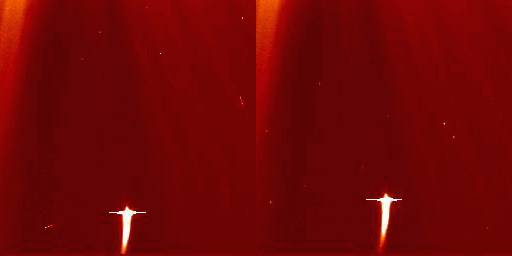
C/2003 K7 in C2 2003 May 24 09:06 UTC (left) and 09:26 UTC (right)
The brightest SOHO Kreutz group comet until now (2009 March) with mag 0
The Brightest Kreutz Comets

C/2003 K7 in C2 2003 May 24 09:06 UTC (left) and 09:26 UTC
(right)
The brightest SOHO Kreutz group comet until now (2009 March) with
mag 0
The brightest Kreutz group comets have saturated the LASCO detectors. For C2 the saturation limit is about mag 1.5. Regulus (alpha Leonis, mag 1.36) shows a small amount of saturation in C2 images and IAUC 8982 describes C/2008 K4 as "saturating slightly in both LASCO cameras with estimated peak magnitude about 1 - 2".
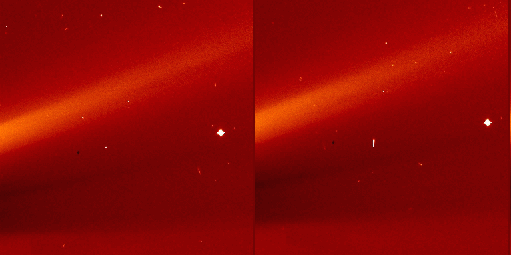
Regulus in C2 2008 August 24 06:54 UTC (left) and 07:54 UTC
(right)
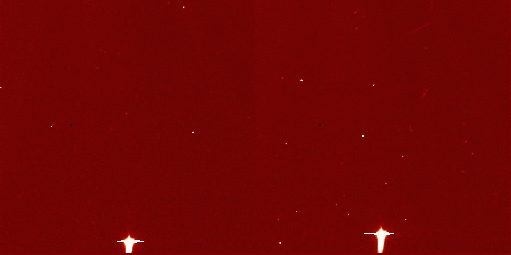
C/2008 K4 in C2 2008 May 23 09:54 UTC (left) and 10:06 UTC
(right)
But "saturating slightly" seems to be an understatement and the brightness of C/2008 K4 is definitely more like mag 1 or brighter as compared with Regulus. And compared with C/2003 K7 the magnitude of C/2008 K4 seems to be between mag 1 and mag 0.
Matthew M. Knight has measured the brightnesses of all Kreutz group comets until SOHO-1100 (2006 February 17). In his thesis he has a table (B.1) which lists all Kreutz comets which have a reliable determined peak in C3. Comets which saturated the detector are italicized. These are C/1998 K10, 1998 K11, 2000 H2, 2001 R2, 2001 U9 and 2003 K7. C/2001 R2 is only saturated in long exposure C3 images taken through the orange filter. The brightest, not italicized comet is C/1998 H2 with a normalized (phase 90 deg, distance 1 AU) C2 peak magnitude of <1.1. The corrections for phase and distance are rather small for C/1998 H2 resulting in an apparent peak brightness of about mag 1.
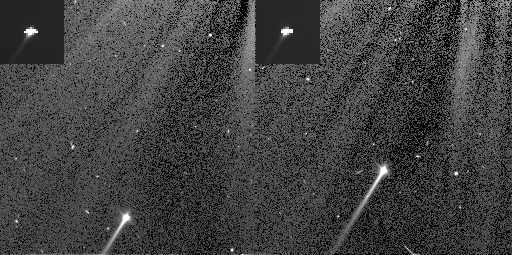
C/1998 H2 in C2 1998 April 30 08:27 UTC (left) and 09:33 UTC
(right)
This comet seems to be on the border to saturate the C2 images,
but enlargements and a different scaling show the saturations
clearly (insets).
From 2005 April on the IAUCs report brightness estimates for all SOHO comets. At present (2009 March) these estimates extend to the end of the year 2008.
IAUC 8694 describes C/2006 A6 as "in
C3 images, the comet was still brightening when at mag perhaps
-1.5 on Jan.5.112 at 11.6 solar radii, showing a bright, thin
tail, but it was at mag about 2.9 and fading fast by the time it
reached 7 solar radii.". The brightness of "perhaps
-1.5" is in strong contrast to M Knight's measurement given
in his table B.1 as peaking in C3 with a normalized magnitude of
3.9 at 11.7 solar radii. The corrections for phase and distance
are +0.70 and +0.13, the apparent magnitude is then 3.1.
The C3 images of 2006 January 05 confirm an apparent magnitude of
about mag 3 and rule out something at mag -1.5.
IAUC 8811 describes C/2006 V2 as "peaking at mag 1.3 on Nov. 3.154 UT at 11.0
solar radii in C3 images". This comet saturated the C2
detector:
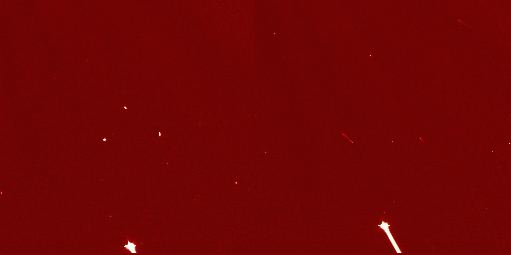
C/2006 V2 in C2 2006 November 03 10:06 UTC (left) and 10:30 UTC
(right)
During 2007 the brightest Kreutz group comets were of mag 3 and in 2008 there was a single bright comet peaking at mag 0-1 (C/2008 K4 pictured above under Regulus).
Searching through the IAUCs before 2005
April (with "SOHO" + "saturated" or
"saturating") one finds C/2001 G2 on IAUC 7613
described as "saturated the C2 images (though the comet was
partially obscured by the occulting pylon)". The FITS-images
show that this comet is close to saturating the detector but not
really did it. Thus the apparent magnitude when entering C2 is
about 2 and without the occulting pylon at about mag 0.8.
Vignetting factors for the first four images are
3.54/3.25/2.80/2.48 corresponding to magnitude differences of
1.4/1.3/1.1/1.0.
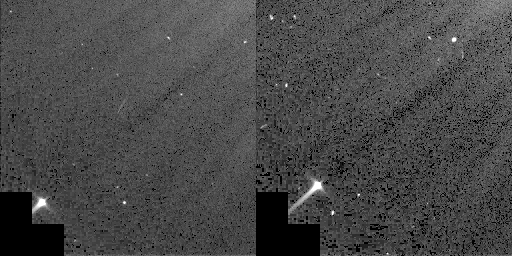
C/2001 G2 in C2 2001 April 08 15:06 UTC (left) and 15:30 UTC
(right)
From my archival searches of LASCO images I
have another candidate -C/1996 Y1 - which I estimated as mag 1
before and after it crossed the pylon in C3 images of 1996
December 22. The first C2 images are indeed saturated and
indicating an apparent magnitude of about 1. Vignetting factors
for the first three images are 2.88/2.67/2.42 corresponding to
magnitude differences of 1.2/1.1/1.0. Without vignetting the
apparent magnitude is close to mag 0.
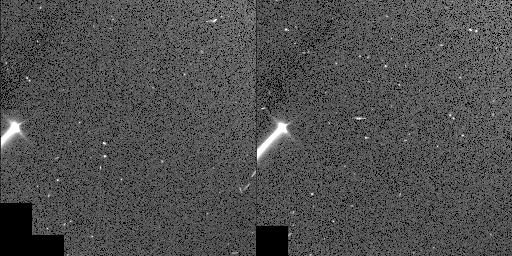
C/1996 Y1 in C2 1996 December 22 22:24 UTC (left) and 22:54 UTC
(right)
C/1996 Y1 and C/2001 G2 don't have a "reliable determined peak in C3" because they were partly obscured by the pylon.
Table of the brightest
Kreutz group comets
mag-a: apparent brightness,
mag-n: normalized brightness (phase angle 90 deg, distance 1 AU),
phase: correction for phase angle, distance: correction for
distance
| Designation | SOHO# | peak in C2 | mag-a | phase | distance | mag-n | Notes |
| C/1996 Y1 | 6 | 1996 Dec 22.93 | 0 | +0.50 | +0.14 | 0.6 | the apparent brightness is estimated from the saturation corrected for vignetting |
| C/1998 H2 | 48 | 1998 Apr 30.40 | <1.0 | -0.03 | -0.11 | <0.9 | the normalized brightness is from M. Knight's table B.1 |
| C/1998 K10 | 54 | 1998 Jun 01.53 | 0.7 | -0.04 | -0.10 | 0.6 | the normalized brightness is from M. Knight's table B.1 |
| C/1998 K11 | 55 | 1998 Jun 01.75 | 0.2 | -0.03 | -0.09 | 0.1 | the normalized brightness is from M. Knight's table B.1 |
| C/2000 H2 | 111 | 2000 Apr 29.85 | 0.6 | -0.03 | -0.08 | 0.5 | the normalized brightness is from M. Knight's table B.1 |
| C/2001 G2 | 303 | 2001 Apr 08.63 | 0.8 | -0.05 | -0.06 | 0.7 | the apparent brightness is estimated from the non-saturation corrected for vignetting |
| C/2001 U9 | 367 | 2001 Oct 23.45 | <0.6 | +0.64 | +0.12 | <1.4 | the normalized brightness is from M. Knight's table B.1 |
| C/2003 K7 | 614 | 2003 May 24.39 | 0.1 | -0.05 | -0.10 | -0.0 | the normalized brightness is from M. Knight's table B.1, in C3 the normalized peak brightness is mag -0.1 |
| C/2006 V2 | 1213 | 2006 Nov 03.15 | 1.3 | +1.16 | +0.17 | 2.6 | the apparent brightness is from IAUC 8811 |
| C/2008 K4 | 1476 | 2008 May 23.42 | 0.5 | -0.03 | -0.11 | 0.4 | the apparent brightness is estimated from the amount of saturation |
| C/2009 Y4 | STEREO-23 | 2010 Jan 03.29 | 1.0 | +0.30 | +0.11 | 1.4 | the apparent brightness is from IAUC 9117 |
| C/2010 E6 | STEREO-37 | 2010 Mar 12.66 | 1.1 | -0.05 | -0.02 | 1.0 | the apparent brightness is from M. Kusiak's measurements |
| C/2010 G4 | 1825 | 2010 Apr 09.9 | 0 | -0.06 | -0.08 | -0.1 | the apparent brightness is from a comparison with C/1996 Y1 |
| C/2010 U8 | 1932 | 2010 Oct 21.14 | 1.8 | +0.62 | +0.09 | 2.5 | the apparent brightness is from my measurements in C2 |
| C/2010 V8 | 1948 | 2010 Nov 14.13 | 2.3 | +1.20 | +0.13 | 3.6 | the apparent brightness is from my measurements in C2 |
| C/2010 W2 | 1954 | 2010 Nov 18.86 | 1.4 | +1.24 | +0.13 | 2.8 | the apparent brightness is from my measurements in C2 |
| 2062 | 2011 May 10.8 | 0.9 | -0.03 | -0.13 | 0.7 | the apparent brightness is from measurements in C3 and the amount of saturation in C2 | |
| 2072 | 2011 May 21.65 | 1.5 | -0.02 | -0.13 | 1.3 | my measurements in C2 show a peak of mag 1.8 but the images are clearly saturated | |
| C/2011 N3 | 2107 | 2011 Jul 05.69 | 1 | -0.06 | -0.10 | 0.8 | the apparent brightness is from IAUC 9227 |
| 2143 | 2011 Oct 01.45 | -0.5 | +0.48 | +0.06 | 0.0 | peak in C3, apparent brightness from own measurements and comparison with Mercury (mag -1.5) | |
| C/2012 E2 | 2257 | 2012 Mar 14.77 | 1 | -0.06 | -0.03 | 0.9 | the apparent brightness is from http://sungrazer.nrl.navy.mil/index.php?p=news/SWAN-kreutz |
| 2505 | 2013 May 11.86 | 1.8 | -0.03 | -0.13 | 1.6 | the apparent brightness is from my measurements in C2 |
Images of the other bright Kreutz comets:
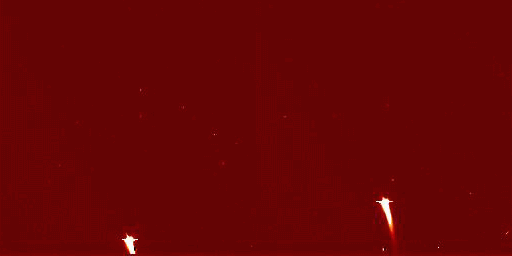
C/1998 K10 in C2 1998 June 01 10:28 UTC (left) and 11:27 UTC
(right)
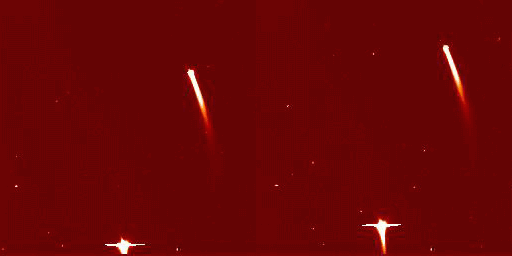
C/1998 K11 (and K10) in C2 1998 June 01 14:28 UTC (left) and
15:00 UTC (right)
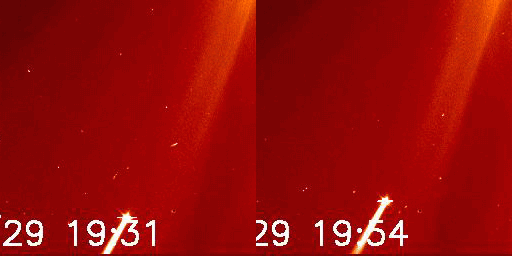
C/2000 H2 in C2 2000 April 29 19:31 UTC (left) and 19:54 UTC
(right)
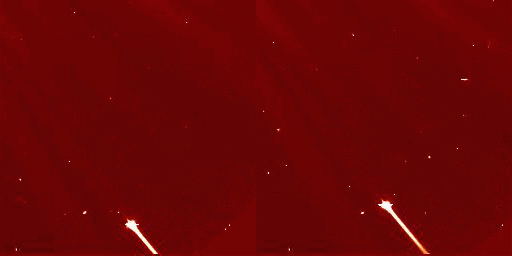
C/2001 U9 2001 October 23 13:27 UTC (left) and 13:50 UTC (right)
2009-
Funding for the study
of SOHO comets expired at the end of the year 2009. Positional
measurements (MPCs) and descriptions (IAUCs) are only complete
till C/2009 Q8 (2009 August 31). Thereafter data for four SOHO
comets of 2009, which were observed also from STEREO, were
published on MPECs and IAUCs: C/2009 V1, V2, Y3, Y4. From these
four comets only C/2009 Y4 was visible in STEREO-COR2. C/2009 Y4
is described as: " was bright (perhaps near mag 1 at peak),
saturating SOHO C3 and C2 images, where the tail was > 1 deg
long; in HI-1 images, the tail was several degrees long."
(IAUC 9117).
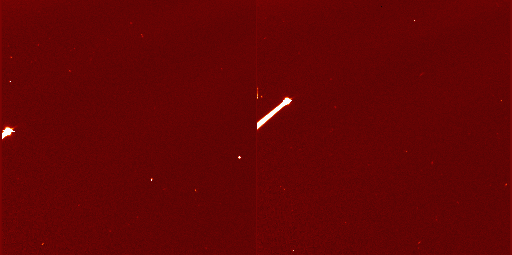
C/2009 Y4 2010 January 03 06:54 UTC (left) and 07:31 UTC (right)
Alan Watson found a bright Kreutz group
comet in STEREO HI1A images of 2010 March 08. It entered C3 on
March 11 and C2 on March 12.
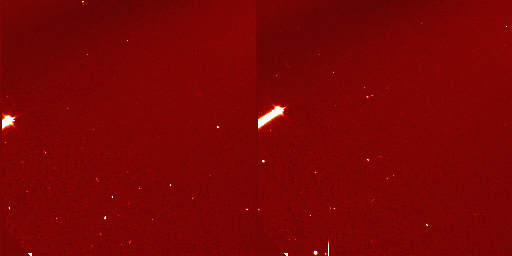
C/2010 E6 2010 March 12 15:54 UTC (left) and 16:06 UTC (right)
Another bright Kreutz group comet was found
by Hua Su
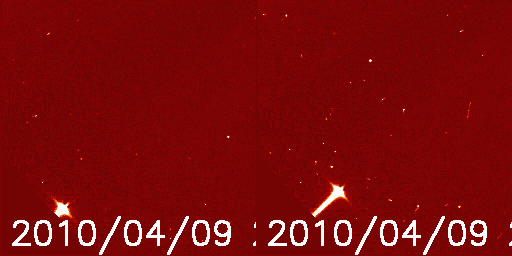
C/2010 G4 2010 April 09 21:30 UTC (left) and 21:54 UTC (right)
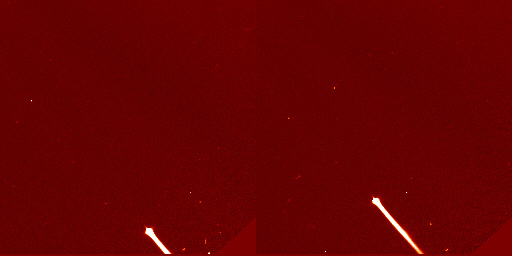
SOHO-1932 2010 October 21 03:12 UTC (left) and 03:48 UTC (right)
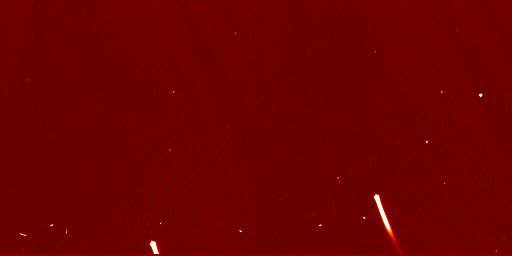
SOHO-1948 2010 November 14 02:36 UTC (left) and 03:36 UTC (right)
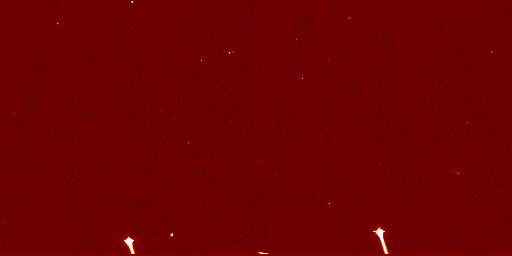
SOHO-1954 2010 November 18 20:24 UTC (left) and 20:36 UTC (right)
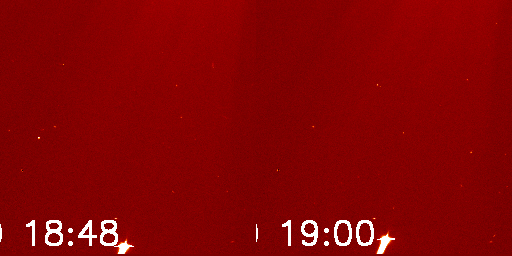
SOHO-2062 2011 May 10 18:48 UTC (left) and 19:00 UTC (right)
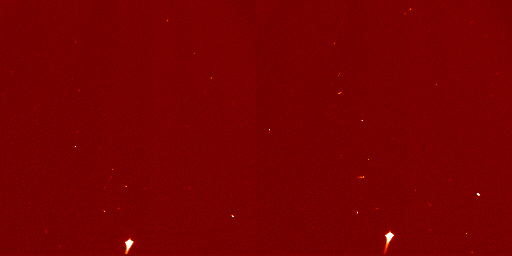
SOHO-2072 2011 May 21 14:12 UTC (left) and 14:24 UTC (right)
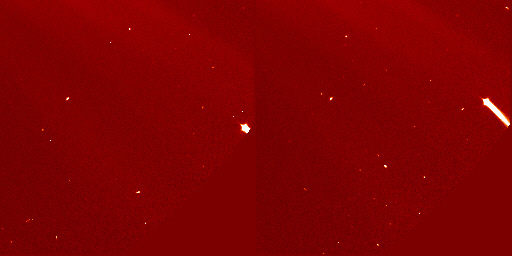
C/2011 N3 2011 July 05 16:12 UTC (left) and 16:47 UTC (right)
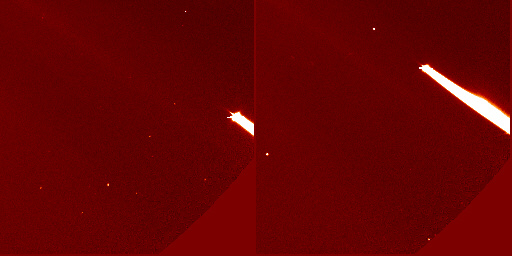
SOHO-2143 2011 October 01 13:36 UTC (left) and 14:36 UTC (right)
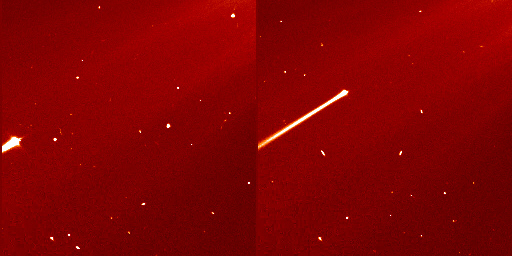
SOHO-2257 2012 March 14 18:24 UTC (left) and 19:24 UTC (right)
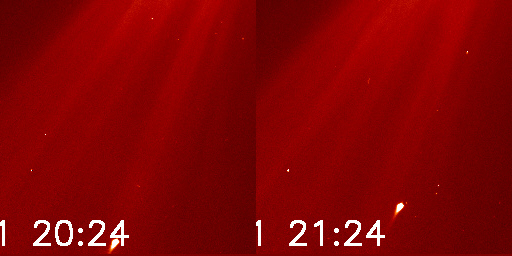
SOHO-2505 2013 May 11 20:24 UTC (ledft) and 21:24 UTC (right)
Knight's measurements
Matthew M Knight's measurements (1996 - 2005) are finally accessable here.
Table of maximum brightness from his data:
| Designation | maximum in C3 | mag-a | maximum in C2 | mag-a | phase | distance | mag-n |
| C/1996 Y1 | 1996-12-22T15:06:56 | 1.33 | 1996-12-22T22:04:12 | 0.55 | 133.43/+0.51 | 0.93837/+0.14 | +1.20 |
| C/1998 H2 | 1998-04-30T07:45:27 | 2.25 | 1998-04-30T08:03:30 | 1.26 | 32.08/-0.03 | 1.04586/-0.10 | +1.13 |
| C/1998 K10 | 1998-06-01T12:41:24 | 1.04 | 1998-06-01T12:27:18 | 0.71 | 32.49/-0.04 | 1.04564/-0.10 | +0.57 |
| C/1998 K11 | 1998-06-01T15:41:23 | 0.65 | 1998-06-01T18:15:37 | 0.21 | 30.97/-0.03 | 1.04149/-0.09 | +0.09 |
| C/2000 H2 | 2000-04-29T21:18:50 | 0.90 | 2000-04-29T19:31:33 | 0.64 | 33.41/-0.04 | 1.03988/-0.08 | +0.52 |
| C/2001 G2 | 2001-04-08T12:42:17 | 2.48 | 2001-04-08T15:06:19 | 1.23 | 45.42/-0.05 | 1.02723/-0.06 | +1.12 |
| C/2001 U9 | 2001-10-23T11:42:15 | 1.61 | 2001-10-23T13:27:31 | 0.67 | 137.21/+0.64 | 0.94603/+0.12 | +1.43 |
| C/2003 K7 | 2003-05-24T11:18:15 | 0.05 | 2003-05-24T11:26:18 | 0.07 | 27.13/-0.02 | 1.04751/-0.10 | -0.05 |